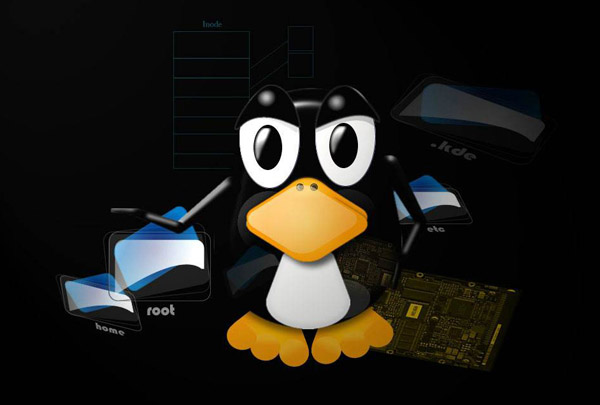一. nohup / setsid / &
使用场景:如果只是临时有一个命令需要长时间运行,什么方法能最简便的保证它在后台稳定运行呢?
我们的解决办法就有两种途径:要么让进程忽略 HUP 信号,要么让进程运行在新的会话里从而成为不属于此终端的子进程。
解决方法:
1.nohup
只需在要处理的命令前加上 nohup 即可,标准输出和标准错误缺省会被重定向到 nohup.out 文件中。一般我们可在结尾加上"&"来将命令同时放入后台运行,也可用>filename 2>&1来更改缺省的重定向文件名。
- [root@pvcent107 ~]# nohup ping www.ibm.com &
- [1] 3059
- nohup: appending output to `nohup.out'
- [root@pvcent107 ~]# ps -ef |grep 3059
- root 3059 984 0 21:06 pts/3 00:00:00 ping www.ibm.com
- root 3067 984 0 21:06 pts/3 00:00:00 grep 3059
- [root@pvcent107 ~]#
2. setsid
setsid 的使用也是非常方便的,也只需在要处理的命令前加上 setsid 即可。
- [root@pvcent107 ~]# setsid ping www.ibm.com
- [root@pvcent107 ~]# ps -ef |grep www.ibm.com
- root 31094 1 0 07:28 ? 00:00:00 ping www.ibm.com
- root 31102 29217 0 07:29 pts/4 00:00:00 grep www.ibm.com
- [root@pvcent107 ~]#
上例中我们的进程 ID(PID)为31094,而它的父 ID(PPID)为1(即为 init 进程 ID),并不是当前终端的进程 ID。请将此例与nohup 例中的父 ID 做比较。
3. &
将一个或多个命名包含在“()”中就能让这些命令在子 shell 中运行中 当我们将"&"也放入“()”内之后,我们就会发现所提交的作业并不在作业列表中,也就是说,是无法通过jobs来查看的。
- [root@pvcent107 ~]# (ping www.ibm.com &)
- [root@pvcent107 ~]# ps -ef |grep www.ibm.com
- root 16270 1 0 14:13 pts/4 00:00:00 ping www.ibm.com
- root 16278 15362 0 14:13 pts/4 00:00:00 grep www.ibm.com
- [root@pvcent107 ~]#
新提交的进程的父 ID(PPID)为1(init 进程的 PID),并不是当前终端的进程 ID。因此并不属于当前终端的子进程,从而也就不会受到当前终端的 HUP 信号的影响了。
二. disown
使用场景:如果事先在命令前加上 nohup 或者 setsid 就可以避免 HUP 信号的影响。但是如果我们未加任何处理就已经提交了命令,该如何补救才能让它避免 HUP 信号的影响呢?
解决方法:这时想加 nohup 或者 setsid 已经为时已晚,只能通过作业调度和 disown 来解决这个问题了
- 用disown -h jobspec来使某个作业忽略HUP信号。
- 用disown -ah 来使所有的作业都忽略HUP信号。
- 用disown -rh 来使正在运行的作业忽略HUP信号。
当使用过 disown 之后,会将把目标作业从作业列表中移除,我们将不能再使用jobs来查看它,但是依然能够用ps -ef查找到它。
disown 示例1(如果提交命令时已经用“&”将命令放入后台运行,则可以直接使用“disown”)
- [root@pvcent107 build]# cp -r testLargeFile largeFile &
- [1] 4825
- [root@pvcent107 build]# jobs
- [1]+ Running cp -i -r testLargeFile largeFile &
- [root@pvcent107 build]# disown -h %1
- [root@pvcent107 build]# ps -ef |grep largeFile
- root 4825 968 1 09:46 pts/4 00:00:00 cp -i -r testLargeFile largeFile
- root 4853 968 0 09:46 pts/4 00:00:00 grep largeFile
- [root@pvcent107 build]# logout
disown 示例2(如果提交命令时未使用“&”将命令放入后台运行,可使用 CTRL-z 和“bg”将其放入后台,再使用“disown”)
- [root@pvcent107 build]# cp -r testLargeFile largeFile2
- [1]+ Stopped cp -i -r testLargeFile largeFile2
- [root@pvcent107 build]# bg %1
- [1]+ cp -i -r testLargeFile largeFile2 &
- [root@pvcent107 build]# jobs
- [1]+ Running cp -i -r testLargeFile largeFile2 &
- [root@pvcent107 build]# disown -h %1
- [root@pvcent107 build]# ps -ef |grep largeFile2
- root 5790 5577 1 10:04 pts/3 00:00:00 cp -i -r testLargeFile largeFile2
- root 5824 5577 0 10:05 pts/3 00:00:00 grep largeFile2
- [root@pvcent107 build]#
三: screen
使用场景: 我们已经知道了如何让进程免受 HUP 信号的影响,但是如果有大量这种命令需要在稳定的后台里运行,如何避免对每条命令都做这样的操作呢?
解决方案: 此时最方便的方法就是 screen 了。简单的说,screen 提供了 ANSI/VT100 的终端模拟器,使它能够在一个真实终端下运行多个全屏的伪终端。screen 的参数很多,具有很强大的功能,
- 用screen -dmS (sessionName)来建立一个处于断开模式下的会话(并指定其会话名)。
- 用screen -list 来列出所有会话。
- 用screen -r (sessionName)来重新连接指定会话。
- 用快捷键CTRL-a d 来暂时断开当前会话。
screen实例
- [root@pvcent107 ~]# screen -dmS Urumchi
- [root@pvcent107 ~]# screen -list
- There is a screen on:
- 12842.Urumchi (Detached)
- 1 Socket in /tmp/screens/S-root.
- [root@pvcent107 ~]# screen -r Urumchi
当我们用“-r”连接到 screen 会话后,我们就可以在这个伪终端里面为所欲为,再也不用担心 HUP 信号会对我们的进程造成影响,也不用给每个命令前都加上“nohup”或者“setsid”了。
1.未使用 screen 时新进程的进程树
- [root@pvcent107 ~]# ping www.google.com &
- [1] 9499
- [root@pvcent107 ~]# pstree -H 9499
- init─┬─Xvnc
- ├─acpid
- ├─atd
- ├─2*[sendmail]
- ├─sshd─┬─sshd───bash───pstree
- │ └─sshd───bash───ping
未使用 screen 时我们所处的 bash 是 sshd 的子进程,当 ssh 断开连接时,HUP 信号自然会影响到它下面的所有子进程(包括我们新建立的 ping 进程)。
2.使用了 screen 后新进程的进程树
- [root@pvcent107 ~]# screen -r Urumchi
- [root@pvcent107 ~]# ping www.ibm.com &
- [1] 9488
- [root@pvcent107 ~]# pstree -H 9488
- init─┬─Xvnc
- ├─acpid
- ├─atd
- ├─screen───bash───ping
- ├─2*[sendmail]
而使用了 screen 后就不同了,此时 bash 是 screen 的子进程,而 screen 是 init(PID为1)的子进程。那么当 ssh 断开连接时,HUP 信号自然不会影响到 screen 下面的子进程了。
































